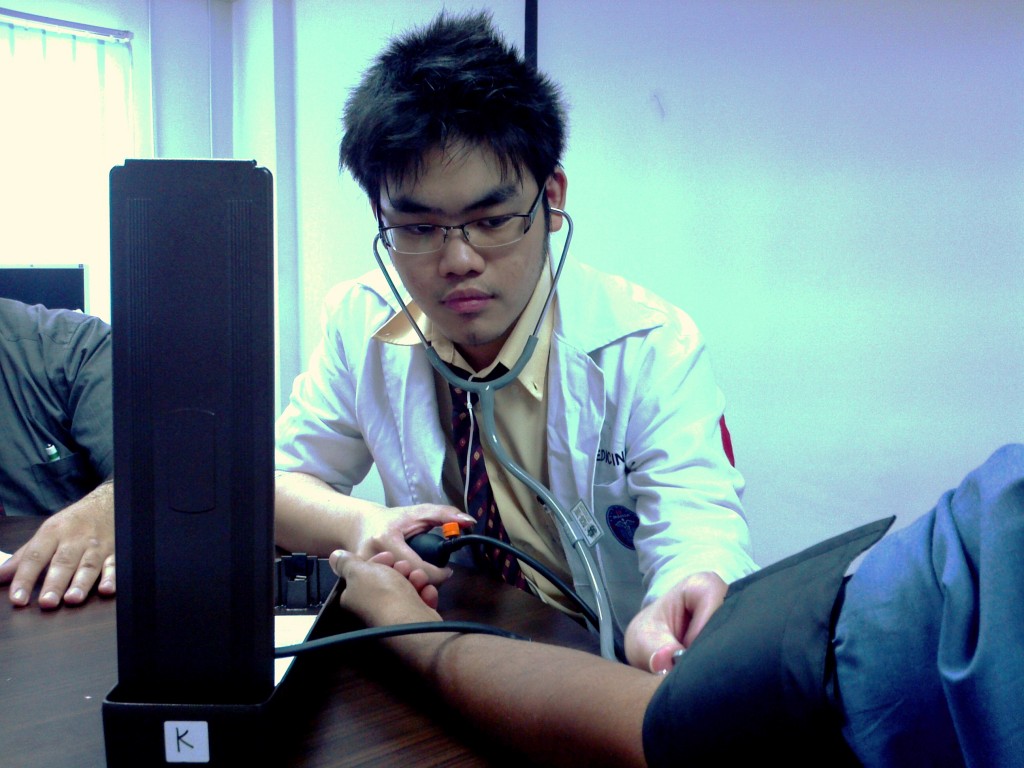The median yearly wage for these postsecondary teachers currently sits around the $85,030 mark. This rate is far higher than the median wage for all postsecondary educators. Wage levels depend on the type of institution the teacher is employed by since 4-year schools tend to pay better than community colleges. Read more
Generally speaking, employers require that these postsecondary teachers hold a Ph.D. or at least some form of postsecondary education. Some schools might favor candidates with relevant work experience in the field. To find out more about How to Become a Health Teacher, click here: Read more
Specialty Health Teacher Salary
According to 2013 wage data collected by the Bureau of Labor Statistics, the Specialty
Health Teacher Salary stands at $85,030 median per year. This places these teachers far ahead of the bulk of all other education, training, and library professions. The median salary in that field is $46,020. In fact, these teachers in postsecondary health education are among the best paid professionals in the entire field. The BLS states that they are surpassed only by law, engineering, economics, atmospheric and space sciences teachers. The top hiring industry for such teachers is, of course, the educational services industry. However, the top 3 best paying industries for these teachers include the following: specialty hospitals, general hospitals, and schools (colleges, universities, and professional schools). Wages depend on the type of institution they are teaching at to a great extent. Generally speaking, teachers at 4-year colleges and universities are better paid than those in community colleges and technical schools. Many report working flexible hours, which combine office hours with coursework. Similarly, a lot of these professionals work part time, since tenured positions declined in number at the postsecondary level.
How to Begin a Professional Career as a Specialty Health Teacher
If you wish to learn
how to become a health teacher at the postsecondary level, you should know that, like most other jobs in higher learning, this one requires a Ph.D. Some community colleges also accept candidates who only hold a master’s degree. But, colleges and universities (especially the more prestigious ones) will not consider them. Since some technical schools also offer courses in various health specialties, successful job candidates will usually have a background of relevant professional work experience. In order to obtain a Ph.D., one must complete several years of postsecondary education, after getting a bachelor’s degree. A Ph.D. entails copious amounts of original research, presented in the form of an academic paper in one’s chosen field of health specialties. Teachers who focus more on career or technical education courses in health specialties needn’t always have post-graduate degrees. However, they should, at the very least, hold a degree in the same level as program they’re teaching. For instance, an associate degree specialty teacher should at least hold an associate degree. Although relevant experience in the field of health or health care is not mandatory, some of these teachers have a post-doc research background or 2 to 3 years of experience as a graduate teaching assistant. Furthermore, some of them hold down an office job while also teaching a health specialty. In order to advance in the academic career, they need to pass the review of the school’s board. However, since tenured teaching positions are declining in prominence in the United States, it is not uncommon for these teachers to remain off the ‘tenure track’ in their career.
Specialty Health Teacher Job Description
Specialty
health teachers job description involves teaching several disciplines which include lab technologies, medicine, pharmacy, public health, therapy, veterinary medicine, and dentistry. Given the wide range of disciplines that they can teach, the details of their job description vary based on subject and school. They may even vary within the context of the same postsecondary educational institution. Along these lines, this job also includes several different titles from clinical sciences professor to instructor or lecturer, associate professor, occupational therapy professor, and clinical education academic coordinator. These teachers may work with many diverse tools and technologies given the specialized nature of their field. They often work on computers, using webcams and microphones. They may also use digital cameras. Some also employ lab mixers such as a polyether mixing machine or a rotator mixer. Finally, those who teach patient care skills might also use lifts, total lift chairs, or Hoyer lifts. The same also applies to the technologies employed in teaching health specialties. Aside from email, word processors, and programs dedicated to computer assisted education, they also use databases and specialized medical software, like programs for electronic health records or interactive anatomy. Like all educators, most of the work that these specialty teachers perform revolves around providing educational services to students. Typical tasks include:
- Assigning homework tasks and assessing them, alongside in-class work from the students, and research papers;
- Course preparation by drafting and delivering a syllabus and regular course handouts;
- Maintenance of all the students’ required records, including those for marks and class attendance;
- Permanent learning and training, in order to stay updated on the latest developments in their field – either by reading specialized scientific literature, or by engaging in talks with colleagues, or by taking part in scientific and academic conferences;
- Supervision of graduate students’ teaching work, their internships, and their research;
- Lab session supervision;
- Planning and delivering exams for grades;
- Keeping student advisory office hours for counseling and assistance;
- Drafting and delivering academic lectures to graduate students, on any and all fields they are specialized in and allowed to teach, like at-work health promotion, stress management, occupational health, etc..
Aside from the basic skills all educators must display, these teachers must possess a good grasp of psychology, biology, medicine and dentistry, plus customer service. Likewise, they must be able to explain the laws and regulations of the medical field to their students. Good specialty teachers have strong written and oral communication skills, comprehension skills, problem solving, critical think and inductive reasoning skills. They should demonstrate good near vision and a sensitivity to spotting and solving problems as they may arise. Day-to-day work involves a lot of human interaction, with some freedom to take decisions and work in an unstructured environment. Most such teachers work within a group and their work weeks are longer than 40 hours, since the job requires quite a lot of overtime and working at home to prepare lectures and grade assignments, at the very least.
Job Outlook for Teachers
As stated before, the
Job Outlook for Teachers remains very strong. If you read our report on the projected best careers for 2015, you already know what an awesome job this is. The field of postsecondary specialty teachers is on the rise, with a projected growth of 22 percent over this decade. The entire field of postsecondary teachers is expected to add new jobs at a ratio of 19 percent over that span of time. This is largely due to the increase in enrollment at postsecondary institutions. However, this growth has been slowing down over the past few years, on account of the ongoing increases in tuition fee costs and student debt levels. On the other hand, the health care industry is on the up and up. More and more students are expected to seek higher learning degrees in health and health care by the year 2022. The degree to which this field will actually grow over the 2012-2022 decade largely depends on funding levels of individual institutions. Should the government decide to spend more on education and research facilities, an increase in employment is expected to follow. At the same time, for-profit institutions will not add as many jobs, since their enrollment numbers have been steadily declining over the past years. All in all, population aging will continue to propel the specialty health teacher industry as more service providers are needed in the field.



Leave a Reply